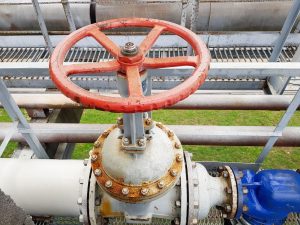Table of Contents
ToggleThe types of DBB valves are ball, gate, plug, and butterfly designed. Their primary function is to maintain security and efficiency in the pipe system, but these different designs are manufactured to meet specific requirements.
Continue reading if you want to make an informed choice about which one fits your needs because this article explores the types of DBB valves, including their advantages, and much more.
Double Block and Bleed Valve Types
1. DBB Plug Valves
It often includes two distinct plugs that can block the medium’s flow on either side while its bleed valve allows the space between them to be drained. Similar to DBB ball valves, their designs offer excellent quick on/off operations with lower pressure drop.
Furthermore, they can be produced from a variety of materials, including stainless steel and flexible graphite, making them adaptable to a wide range of mediums, pressures, and much more.
However, their plugs are components that can wear over time, especially if used in high-cycle applications. They may have a longer manufacturing process or lead time due to their complicated designs, such as the plugs.
2. DBB Gate Valves
Similar to any DBB valve, it features two blocking components and a bleed valve in between them. They have two vertical discs that move up and down to either open or close the valve.
Furthermore, they can be constructed with bigger sizes, often 3–50 inches or larger. However, the DBB gate valve causes them to be slower in off and on operations, resulting in possible increased energy consumption.
Instead, because of their straight flow path, they prove suitable for applications requiring low flow restrictions and an effective seal too, such as high pressure settings and water supply systems.
3. Double Block and Bleed Ball Valve
This DBB valve type is composed of two ball-shaped sealing components in a single body. It has a bleed valve between the two that lets the trapped medium be safely removed from the system.
The DBB ball valve is mostly utilised where quick on/off operations are crucial because users simply need to rotate 90 degrees the ball to open or close it.
Furthermore, they are reported to have minimal pressure drop due to their straight line flowpath. They are also widely available from a variety of manufacturers. Although they may have a higher cost than regular ball valves due to their more complex design, which contributes to their extra reliability.
If you want a valve with DBB features, you are able to get a quote from a reputable manufacturer, notably Gowin, to ensure that it matches your requirements. They supply an extensive variety of ddb valves and other products that conform to numerous international standards.
4. Double Block and Bleed Butterfly Valves
Lastly, this DBB valve rotates two discs in a central axis to open and close the valve. Similar to the other DBB valves mentioned, it has a bleed valve too. It is also lightweight and provides rapid operation because of its basic design.
So, these DBB valves are widely used, which makes them have higher availability by various manufacturers.
However, the flow frequently hits its disc components, which could lead to some pressure drop. This makes DBB butterfly valves less ideal for throttling in extended periods of time compared to globe valve designs.
Emerging Technologies in DBB Valves
Some manufacturers have become increasingly improving their DBB valves through integrating them with advanced technologies, including connecting them with smart sensors and the Internet of Things (IoT).
This enables the industries to real-time monitor crucial factors in the pipe system like pressure, temperature, and much more. Although these sorts of DBB valves are less common due to their more complex characteristics, they increase efficiency and the industry’s safety.








